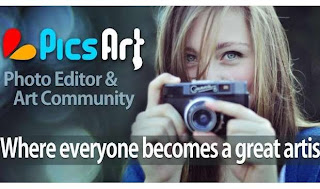Information technology and telecom are two of the fastest growing
industries. India is expected to achieve a PC penetration of 65 per
thousand, against the existing rate of 14 per thousand people, by the
year 2008.
India at present has 15 million computers and this figure is expected
to grow five-fold to 75 million by the year 2010. This will add large
volumes of electronic waste to the waste stream and the environment.
According to one estimate, two million PCs are nearing disposal, which
include 286, 386 and 486 vintages being rendered obsolete.
New upgrades are appearing in the market at small gaps increasing
obsolesce rate of the existing models.
India today has 75 million cell phone users. This is expected to
touch 200 million by 2007. According to one estimate, approximately
150,000 tons of e-waste is generated in India annually and almost all of
it finds its way into the informal sector. The trend is likely to
increase manifold in proportion to the growth in the electronics
industry.
Almost all electronic and electrical appliances, like computers, mobile
phones, iPods, refrigerators, washing machines, televisions etc,
constitute e-waste after being discarded Because of this recycling of
e-waste has emerged as a lucrative business. These products are
stripped down to yield valuable metals like platinum, gold and copper
Computers and other electronic equipment are made from hundreds of
different materials. Many of these materials are inherently valuable,
such as gold and platinum, and many are non-renewable. If they can be
extracted they can be reused in manufacture again as a 'secondary' raw
material.There are also some nasties in e-waste. Heavy metals including
lead, cadmium, mercury and arsenic are used in electronic equipment.
When disposed of they can leach from landfill tips into the water table.
Brominated-flame retardants used in computer equipment are both an
occupational and environmental health threat. Printer inks and toners
often contain toxic materials such as carbon black and cadmium. It is
these environmental health implications that have put e-waste under the
spotlight of international governments and environmentalists alike.
Perhaps our society's biggest problem with e-waste (and other waste
types) is our backward approach - we wait until we have a waste problem
before we think about solving it. According to Helen Lewis, Director of
the Centre for Design at RMIT University, tackling the problem at the
source is often cheaper and more effective than trying to solve the
problem at the end of the line. "A lot of the attention has focused on
waste legislators, when our answers could be coming from product
designers," says Lewis. And she would know, having spent a number of
years as Manager of Industry Programs at the state government waste
authority EcoRecycle Victoria. "If we're serious about addressing our waste problems, we need to
start work at the design stage of a product's life cycle. Products can
be better designed so that they last longer, are more environmentally
responsible and so that they can be more easily dismantled and recycled
at the end of their life."
The Centre for Design at RMIT University is a leader in the
growing field of Design for the Environment. This approach to design
ensures that environmental impacts, including pollution and waste, are
considered and minimised at all stages of a product's life, not just at
the disposal stage. Design for the Environment fits in with a broader
theme - the concept of Extended Producer Responsibility (EPR). EPR
involves producers and original equipment manufacturers taking more
responsibility for managing the environmental impacts of their products
throughout their life. In other words, it's about making the producer
pay.
The European Parliament's Directive on Waste Electrical and
Electronic Equipment (affectionately known as 'WEEE') highlights EPR as a
key component of any solution to our growing e-waste problem. Other
studies, including Environment Australia's Product Stewardship
Discussion Paper, say the same common-sense thing — that producers
should design products better so that they are less harmful for the
environment and so that they last longer and therefore don't need to be
recycled and replaced as often. They also call on original equipment
manufacturers to take their used products back and recycle or dispose of
them responsibly.
It is also recommended that the process of legislation should be
transparent, participatory and most democratic which will enable all the
stakeholders to participate and contribute to the process so that there
is more effective compliance and a better solution.

























